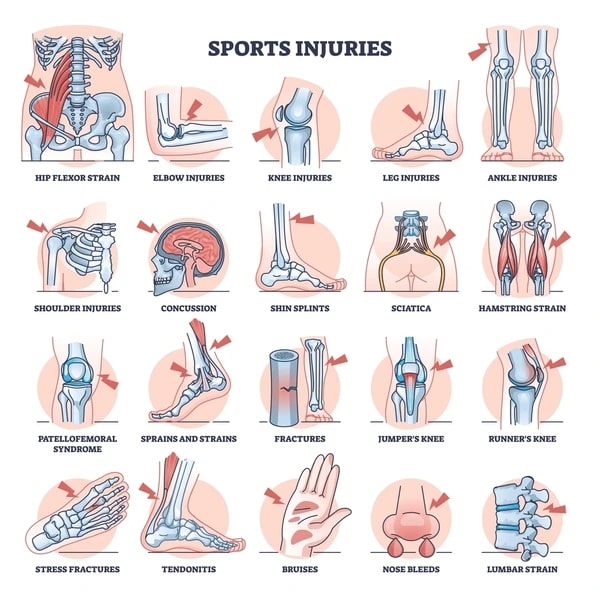
Understanding Physiotherapy: How It Can Help with Sports Injuries
Sports injuries can derail your training, competition, and daily life. Whether you’re a weekend warrior playing recreational soccer or a competitive athlete recovering from a sprained ankle, physiotherapy provides evidence-based strategies to accelerate healing, reduce pain, and restore function. At Keswick Physiotherapy Spine and Sports Injury Center, we specialize in sports injury rehabilitation tailored to each patient’s goals. In this guide, you’ll learn how physiotherapy addresses common sports injuries—from initial assessment through advanced treatment techniques—and discover how proactive care can prevent setbacks and optimize athletic performance.
What Is Sports Injury Physiotherapy?

Sports injury physiotherapy is a specialized branch of physiotherapy focused on diagnosing, treating, and preventing injuries sustained during athletic activity. Unlike general physiotherapy, sports injury physiotherapy integrates movement science, biomechanics, and exercise prescription to target injuries common among active individuals. At our Windermere Physiotherapy clinic, our licensed physiotherapists perform a thorough biomechanical analysis to identify root causes—such as muscle imbalances, joint restrictions, or poor movement patterns—that contribute to injury. Treatment plans combine manual therapy, therapeutic exercise, and cutting-edge modalities (like dry needling and laser therapy) to accelerate tissue healing, restore strength, and improve range of motion. By addressing both symptoms and underlying dysfunction, sports injury physiotherapy helps athletes return to play safely and confidently.
Common Sports Injuries and How Physiotherapy Treats Them

Sports participation carries the risk of injuries ranging from acute sprains to chronic overuse conditions. Common injuries we treat in Alberta include ankle sprains, hamstring strains, knee ligament tears (ACL/PCL), tendonitis (Achilles, patellar), rotator cuff injuries, and concussions. Physiotherapy interventions vary by injury type: ankle sprains benefit from manual joint mobilizations, proprioceptive exercises, and bracing; hamstring strains respond well to progressive loading and soft‑tissue techniques; tendonitis often requires eccentric strengthening and shockwave therapy; and concussion rehabilitation focuses on vestibular exercises and graded return‑to‑activity protocols. Our customized treatment plans address each athlete’s sport‑specific demands to ensure a safe and effective recovery.
The Physiotherapy Assessment Process
A successful sports injury recovery begins with a comprehensive assessment. During your first visit at our clinic, a physiotherapist conducts a detailed intake—including injury history, symptom description, and activity level—to establish context. Next comes a physical examination: movement screening, strength testing, range‑of‑motion measurements, and functional performance assessments (e.g., single‑leg squats). Data from these tests help identify biomechanical deficits and pinpoint areas of weakness or instability. We then collaborate with you to set realistic short‑ and long‑term goals, creating a personalized treatment plan that outlines frequency, expected timelines, and milestones to track progress.
Evidence‑Based Treatment Techniques
At Keswick Physiotherapy, we combine proven modalities and hands‑on care to deliver optimal outcomes. Key techniques include:
- Manual Therapy: Joint mobilizations and soft tissue massage to improve mobility and decrease pain.
- Dry Needling & IMS: Targeted needle therapy to release muscle trigger points and reduce tension.
- Laser Therapy: Non‑invasive light therapy to accelerate tissue repair and inflammation reduction.
- Custom Orthotics: Biomechanical support for lower limb alignment and injury prevention.
- Vestibular Rehabilitation & Concussion Rehab: Specialized protocols to restore balance, coordination, and cognitive function.
- Therapeutic Exercise: Sport-specific strengthening, flexibility, and proprioception drills to rebuild function and resilience.
Preventive Strategies: Injury Prevention & Performance Enhancement
Beyond recovery, physiotherapy plays a crucial role in preventing future injuries and maximizing athletic performance. Our Windermere physiotherapists develop individualized injury‑prevention programs based on sport demands and movement analysis. Key components include dynamic warm‑ups, neuromuscular control drills, strength training for weak muscle groups, and education on load management. Regular check‑ins allow us to fine‑tune your plan as training intensity changes. By proactively addressing biomechanical imbalances and movement inefficiencies, athletes can reduce injury risk and perform at their peak.
Conclusion
Sports injury physiotherapy is a powerful tool for athletes of all levels in Alberta. By combining expert assessment, evidence‑based treatments, and targeted prevention strategies, physiotherapy accelerates recovery, minimizes downtime, and enhances performance. Whether you’re returning from an injury or seeking to avoid one, Keswick Physiotherapy Spine and Sports Injury Center offers personalized care designed to get you back in the game stronger than before.
About the Author
Keswick Physiotherapy
Contributing writer at Keswick Physiotherapy, sharing expert insights on physiotherapy and wellness.
Need Professional Help?
Our expert physiotherapists are here to help you with personalized treatment plans.
Book an Appointment

